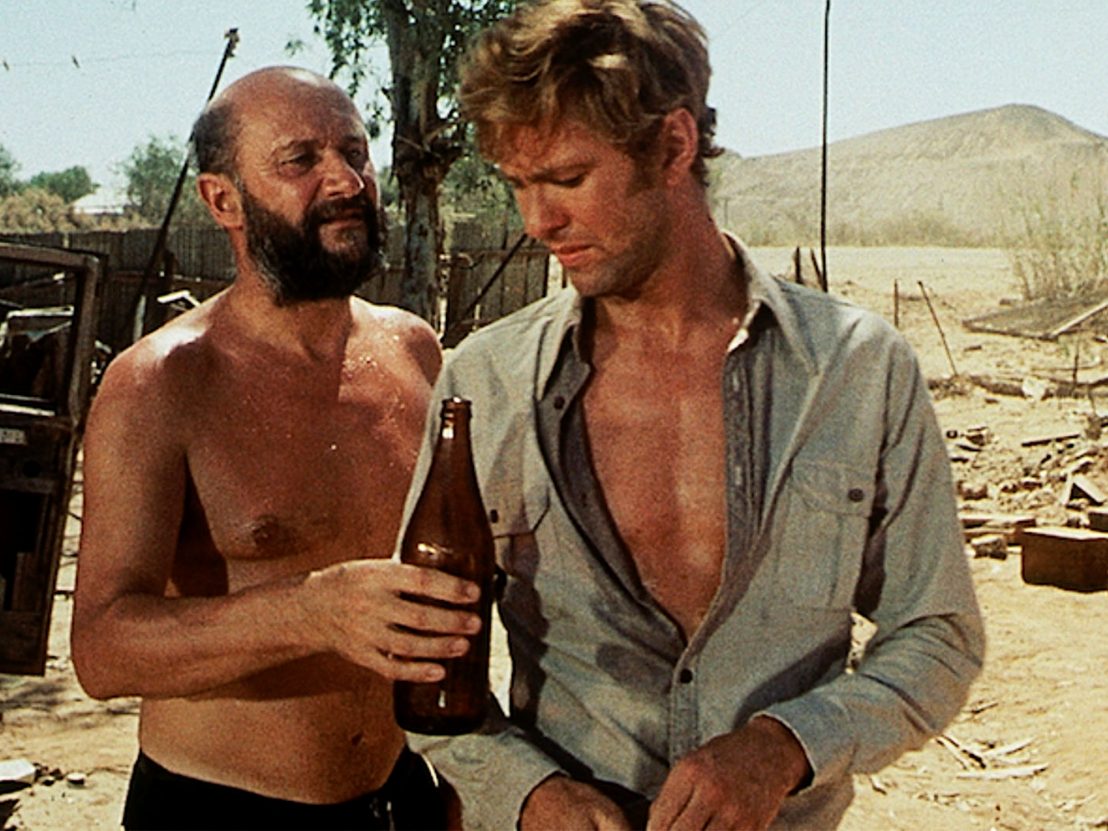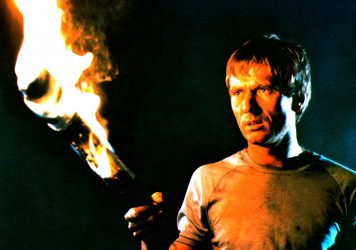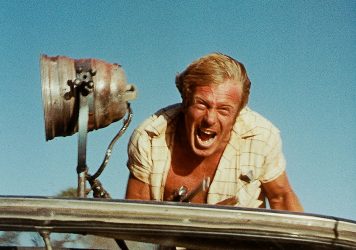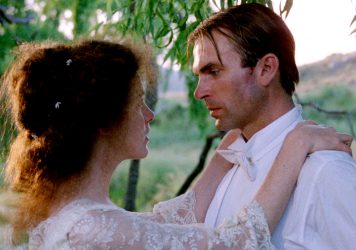
The indelible first impression Ted Kotcheff’s Wake in Fright made on its audience swiftly became its greatest asset. After stunning the crowd as its Cannes Film Festival premiere in 1971, the film yielded a paltry box office return and by the ’90s its master negative had become warped beyond use. Yet despite being impossible to view for decades, Wake in Fright endured as a classic of Australian cinema, returning to Cannes in 2009 upon its restoration.
Following the plight of John Grant (Gary Bond), an English schoolteacher returning home from his post in an Australian backwater, Wake in Fright adopts the guise of a rote ’70s survival thriller. Yet the opening shot, a 360-degree view of the Outback, makes it clear that Kotcheff has greater designs for his uniquely Australian nightmare. The Canadian-born director grounds his atmospheric fever dream in the specifics of the region, utilising its desolate beauty and the mental isolation its inhabitants endure while smartly eschewing conventional horror tropes.
From the outset Kotcheff leans in on the cultural displacement of the strait-laced, queer-coded Grant as he journeys to the fictional town of Bundanyabba – affectionately known as the Yabba – to fly back to Sydney. A shy, genteel outlier in a sea of coarse, sweaty men, packed like sardines into a veterans’ club, Grant is repeatedly assailed by the excessive charm and idiosyncratic ways of the locals. Kotcheff frames his fish-out-of-water protagonist as being too buttoned-up for this rural lifestyle. But the relentless, contemptuous camaraderie of the local men – a novel source of threat for a thriller – suggests a polite barely concealed intolerance for Grant’s latent queerness.
Gary Bond is impeccably cast as Grant. A skilled stage actor with few screen credits, Bond was an openly gay member of the British theatre scene in the early ’70s, and he lends Grant an earnest authenticity. Bond’s attractiveness contrasts the plain, weather-beaten men of the Yabba, and there’s a cautious inflection in his speech – a hyper-awareness behind his anxious, darting eyes that suggests a man manoeuvring a totally foreign space with the threat of exposure hanging over him.
“The greatest terror in Wake in Fright is the realistic depiction of a gay man sacrificing his morality.”
At the local tavern Grant is forced to accept a drink from a stranger, the gay subtext barely concealed as such. The stranger is Tim (Al Thomas), a skittish, bowtie-clad gentleman who becomes the closest thing to ally Grant has in the Yabba. Later, Kotcheff intensifies Grant’s nightmare by miring him in the misogynistic chumminess of Tim’s brutish friends.
At Tim’s house they lech after his lonely daughter, Janette (Sylvia Kay), and Grant, lithe and jumpy, stands out by not complying. Janette enables one of the film’s most effective moments, when Grant follows her into the kitchen as she cleans up after the men and asks her if she needs help, the cautious, closeted schoolteacher rebounding into the only halfway empathetic person for miles.
Kotcheff provides Grant with a nameless lover back in Sydney, perfunctorily shown through brief bikini-clad photos and flashbacks – but she’s only a cipher, a pin-up poster in Grant’s mind, serving as the fantasy of a young man eager to assert his straightness. When the affection-starved Janette propositions Grant he clumsily follows her under the close watch of Tim’s friends, but the second they are alone he vomits at the prospect of sex. Kotcheff allocates some sympathy to Grant as Janette’s immediate reaction, pausing before forcefully wiping his mouth, is both maternal and knowing. Yet it is acutely uncomfortable viewing for the gay viewer, a recognisable physical reaction to compulsory heterosexuality.
Consequently, Grant throws himself into the ways of the Yabba men, culminating in the film’s most controversial sequence – a savage, beer-fuelled kangaroo hunt that ends with Grant stabbing a baby roo to death. Kotcheff splices in real footage of a hunt, and the scene remains difficult to watch to this day. It’s the crux of Wake in Fright’s portrait of sordid masculinity, the point at which Grant makes peace with the barbaric habits of the townspeople and embraces their rituals. Save for Janette, everyone Grant encounters in the Yabba is drunk, Kotcheff addressing the toxic effects of Australia’s world-famous drinking culture.
By the film’s close, Grant’s ever-loosening grip on his sanity has compromised both his thoroughly English moral integrity and his closeted sexuality. When he meets Doc Tydon (Donald Pleasence), a grubby, wild-eyed doctor, Grant recognises a fellow pariah; later the pair engage in implied off-screen sex. Kotcheff leaves the narrative vague enough for viewers to overlook this detail, but it serves as the endpoint for Grant’s sexual purgatory, allowing him to embrace what he’s been suppressing.
Surprisingly, Kotcheff grants his protagonist clemency with Grant’s climactic suicide attempt, the result of an inability to physically escape the Yabba and what it represents for him, failing and allows him to happily walk free. Ultimately, the greatest terror in Wake in Fright is the realistic depiction of a gay man sacrificing his morality.
Published 12 May 2021

By Lara C Cory
Colin Eggleston’s 1978 film emerged from one of Australian cinema’s boldest and most productive periods.

By Mark Asch
A meek and mild school teacher spirals into Aussie Hell in this riveting, repellant restoration.

In 1979, the first Australian film directed by a woman since the silent era signalled a new dawn for female authorship.